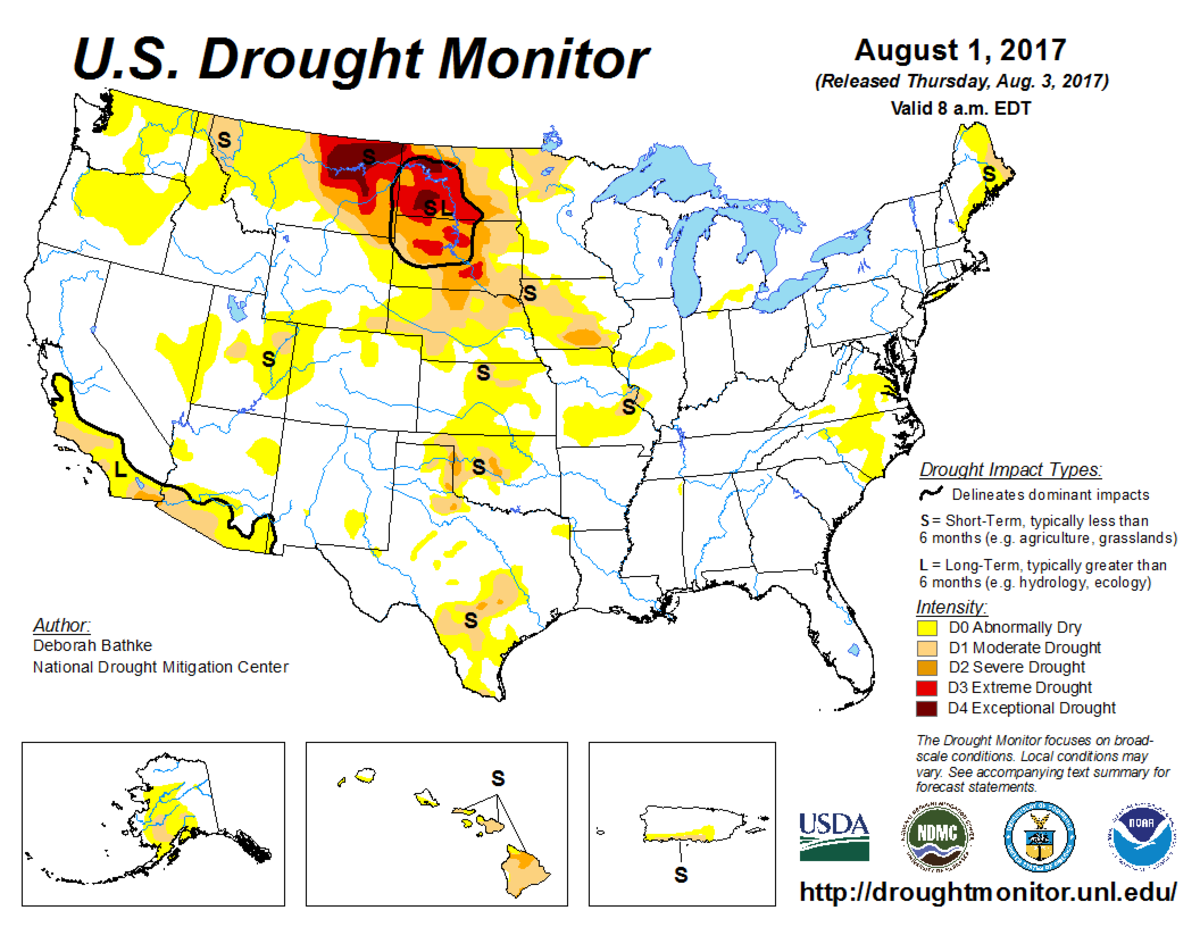
According to the August 1, 2017, U.S. Drought Monitor, moderate to exceptional drought covers 11.8% of the contiguous United States, an increase from last week’s 11.0%. Extreme to exceptional drought—the worst drought categories—remained the same at 2.6%.
An upper-level ridge of high pressure shifted from the central contiguous United States to the West during this U.S. Drought Monitor week. Meanwhile, an upper-level trough intensified over the eastern United States.
It was a warmer- and drier-than-normal week across much of the West, especially the far West but not for the Southwest where monsoon showers brought above-normal precipitation and near- to cooler-than-normal temperatures. Cool fronts and low pressure systems were funneled across the central to eastern parts of the country beneath the upper-level trough.
As a result, temperatures were generally cooler than normal from the central Plains to East Coast. Above-normal rain occurred along frontal boundaries across parts of the Plains, the Midwest, and Mid-Atlantic regions, and across Florida due to Tropical Storm Emily.
Drought and abnormal dryness contracted in parts of the Plains, the Midwest, and especially in the Southwest, but those conditions expanded in the Northwest to northern Plains and parts of the southern Plains, Carolinas, and Maine.

The full U.S. Drought Monitor weekly update is available from Drought.gov.
In addition to Drought.gov, you can find further information on the current drought as well as on this week’s Drought Monitor update at the National Drought Mitigation Center.
The most recent U.S. Drought Outlook is available from NOAA’s Climate Prediction Center and the U.S. Department of Agriculture provides information about the drought’s influence on crops and livestock.
For additional drought information, follow #DroughtMonitor on Facebook and Twitter.



